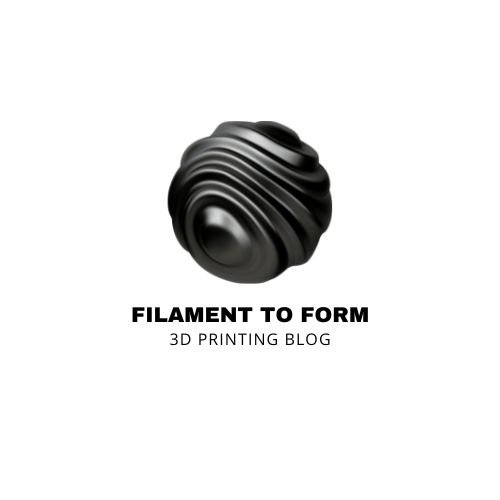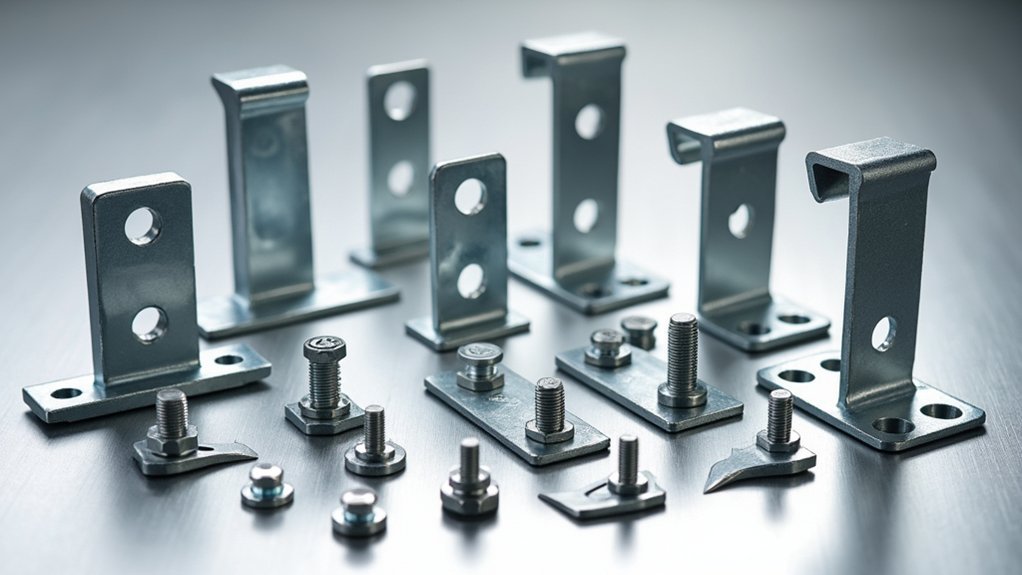You’ve spent countless hours perfecting your 3D printing skills, but you’re still struggling with inconsistent results and failed prints. The culprit isn’t your printer or filament—it’s your slicing software. While basic slicers work for hobbyists, professionals need advanced tools that deliver precision, reliability, and sophisticated control over every print parameter. Three industry-standard options consistently outperform the competition, but choosing the wrong one could cost you time and materials.
Panduit PLVS0305C3793
There appears to be a significant mismatch between your article title “Best Advanced Slicing Software for 3D Printers” and the subtopic “Panduit PLVS0305C3793,” which is a networking/LAN connector product, not 3D printing software.
The Panduit PLVS0305C3793 is an industrial-grade EGPT connector designed for creating LAN connections. You’ll find it’s easy to install and delivers high-quality performance for networking applications. However, users suggest you’ll need an instruction manual and proper tools, which aren’t included. While it’s necessary for modular connector projects, it has no relevance to 3D printing slicing software whatsoever.
Best For: Network technicians and IT professionals who need reliable industrial-grade EGPT connectors for creating high-quality LAN connections in modular connector projects.
Pros:
- Industrial-grade quality ensures reliable performance for networking applications
- Easy installation process for efficient workflow
- High-quality Panduit construction provides long-lasting durability
Cons:
- No instruction manual included, requiring users to seek additional guidance
- Necessary tools are not provided with the product
- Limited reference materials or support documentation available
Becker CAD 12 3D PRO – 2D and 3D CAD Software for Professionals
Becker CAD 12 3D PRO positions itself as a budget-friendly CAD solution for professionals who need both 2D drafting and 3D modeling capabilities with STL export functionality for 3D printing. You’ll get a perpetual license for three PCs without subscriptions, plus AutoCAD compatibility with DXF/DWG support. However, you’ll face significant challenges with poor documentation, confusing menus, and crashes when opening 3D AutoCAD files. While it works adequately for simple 2D drawings, you’ll find it lacks advanced features like paper space and modern workflows. The steep learning curve and outdated interface make it difficult to recommend despite its low cost.
Best For: Budget-conscious users who need basic 2D CAD functionality with occasional simple 3D modeling and don’t mind investing significant time to learn an outdated interface.
Pros:
- Perpetual license for 3 PCs with no subscription fees or expiration dates
- AutoCAD compatibility with DXF/DWG import/export and STL export for 3D printing
- Low cost alternative that includes both 2D and 3D capabilities in one package
Cons:
- Poor documentation, confusing menus, and lack of clear user manual
- Frequent crashes when opening 3D AutoCAD files and stability issues
- Missing advanced features like paper space and modern CAD workflows
Becker CAD 12 3D Professional CAD Software for 2D + 3D Design (Compatible with AutoCAD)
Budget-conscious designers seeking AutoCAD compatibility will find Becker CAD 12 3D Professional offers a compelling alternative for creating 3D models destined for printing. You’ll get extensive 2D and 3D design tools with DXF and DWG file support across three PCs without subscription fees. However, you’ll face a steep learning curve, especially if you’re coming from AutoCAD. The primarily German tutorials and inconsistent English support create additional hurdles. While you can successfully export scalable 3D designs for printing, the software requires constant internet connectivity and lacks some advanced features found in premium alternatives.
Best For: Budget-conscious designers who need AutoCAD-compatible software for basic 2D and 3D design work and don’t mind a steeper learning curve.
Pros:
- Compatible with AutoCAD files (DXF/DWG) and includes comprehensive 2D/3D design tools at a fraction of AutoCAD’s cost
- One-time purchase covers 3 PCs with no subscription fees or expiration date
- Successfully exports 3D designs for printing with scalable project capabilities
Cons:
- Steep learning curve with primarily German tutorials and inconsistent English language support
- Requires constant internet connectivity and cannot operate offline
- Lacks advanced features compared to AutoCAD, making it less suitable for complex professional projects
Factors to Consider When Choosing Advanced Slicing Software for 3D Printers for Professionals
When you’re selecting advanced slicing software for professional 3D printing, you’ll need to evaluate several critical factors that directly impact your workflow efficiency and output quality. Your decision should focus on software compatibility with your existing systems, the depth of advanced features available, and how well the solution integrates into your professional processes. You’ll also want to assess the quality of technical support provided and carefully analyze the licensing structure and pricing to guarantee it aligns with your business requirements.
Software Compatibility Requirements
Before you invest in advanced slicing software, you’ll need to verify it works seamlessly with your existing hardware and software ecosystem. First, confirm the software supports your operating system—whether you’re running Windows, macOS, or Linux. Next, check file format compatibility, making sure it can import and export STL, OBJ, and AMF files for maximum versatility with different 3D models.
You’ll also want to verify printer compatibility across multiple brands and models, as support varies considerably between manufacturers. Integration with your CAD software is equally important for maintaining an efficient design-to-print workflow. Finally, make sure the software receives regular updates with newer slicing algorithms and features, keeping you current with evolving 3D printing technology and maintaining long-term value for your investment.
Advanced Feature Sets
Professional-grade slicing software distinguishes itself through sophisticated feature sets that give you granular control over every aspect of your print process. You’ll need customizable layer height settings, dynamic print speed adjustments, and precise temperature control to achieve superior quality and efficiency. Advanced support generation algorithms become essential when you’re tackling complex geometries with overhangs and intricate details while minimizing material waste.
Multi-file format processing capabilities guarantee you can handle diverse project requirements without conversion headaches. Multi-extruder support and seamless hardware integration across different printer models provide the flexibility you need for varied professional applications. Look for software offering thorough parameter customization, adaptive slicing algorithms, and real-time preview features that let you visualize and adjust your settings before committing to lengthy print jobs.
Professional Workflow Integration
As you evaluate advanced slicing software for professional environments, seamless workflow integration becomes a critical factor that directly impacts your productivity and project success rates. You’ll need software that integrates smoothly with your existing CAD tools, preventing data loss and compatibility issues during design-to-print shifts. Support for multiple file formats like STL, OBJ, and AMF guarantees you can handle designs from various sources without conversion headaches.
Look for customizable slicing parameters that let you fine-tune settings for different materials and project requirements. Detailed print previews and layer-by-layer analysis capabilities help you identify potential issues before printing, saving time and materials on complex projects. Finally, prioritize user-friendly interfaces and all-encompassing documentation that facilitate quick team onboarding and minimize workflow disruptions.
Technical Support Quality
Technical support excellence separates premium slicing software from basic alternatives when you’re managing critical production deadlines. You’ll need responsive customer service that resolves complex issues quickly, preventing costly downtime that impacts your workflow. Look for extensive documentation and detailed tutorials that guide you through advanced features without requiring constant support requests.
Community forums enhance your support experience by connecting you with other professionals who share practical insights and proven solutions. Software backed by dedicated teams familiar with 3D printing specifics addresses technical challenges more effectively than generic support.
Regular updates with clear communication about improvements and bug fixes maintain your professional environment’s stability. When evaluating options, prioritize vendors that demonstrate consistent support quality and understand the unique demands of professional 3D printing operations.
Licensing and Pricing
Three primary licensing models dominate the advanced slicing software market, each affecting your budget and operational flexibility differently. Perpetual licenses offer one-time purchases with long-term ownership, while subscription models require ongoing payments but typically include automatic updates. Freemium options provide basic functionality at no cost with paid premium features.
You’ll need to evaluate how many devices your license covers, as some software allows multi-PC installations while others restrict usage to single machines. Always test free trials or demo versions before purchasing to ascertain the software fits your workflow needs.
Factor in hidden costs like mandatory updates, essential add-ons, or premium support packages, as these can considerably impact your total investment beyond the initial purchase price.
Frequently Asked Questions
How Much Does Professional 3D Slicing Software Typically Cost per License?
You’ll find professional 3D slicing software licenses range from $200-$5,000 annually depending on features. Entry-level pro versions start around $200-500, while enterprise solutions with advanced capabilities can cost $2,000-5,000 per year.
Can Advanced Slicers Handle Multi-Material Printing With Different Temperature Requirements?
You’ll find advanced slicers excel at multi-material printing with different temperature requirements. They’ll automatically manage temperature shifts, create purge towers, and optimize settings for each material throughout your complex prints.
Which Slicing Software Offers the Best Customer Support for Enterprise Users?
You’ll find Simplify3D provides dedicated enterprise support with direct engineer access, while PrusaSlicer offers community-driven help. Ultimaker Cura’s enterprise tier includes priority support, but Simplify3D’s specialized assistance typically wins for businesses.
Do Professional Slicers Integrate With Existing CAD Workflow Management Systems?
You’ll find most professional slicers integrate seamlessly with CAD workflow systems through APIs and plugins. They’ll connect directly to PLM platforms, automatically importing design files and maintaining version control throughout your production pipeline.
What File Formats Beyond STL Do Advanced Slicers Support for Import?
You’ll find advanced slicers support OBJ, PLY, AMF, and 3MF formats beyond STL. They’re increasingly accepting STEP files directly, plus some handle proprietary CAD formats like SOLIDWORKS parts, eliminating conversion steps in your workflow.





Leave a Reply